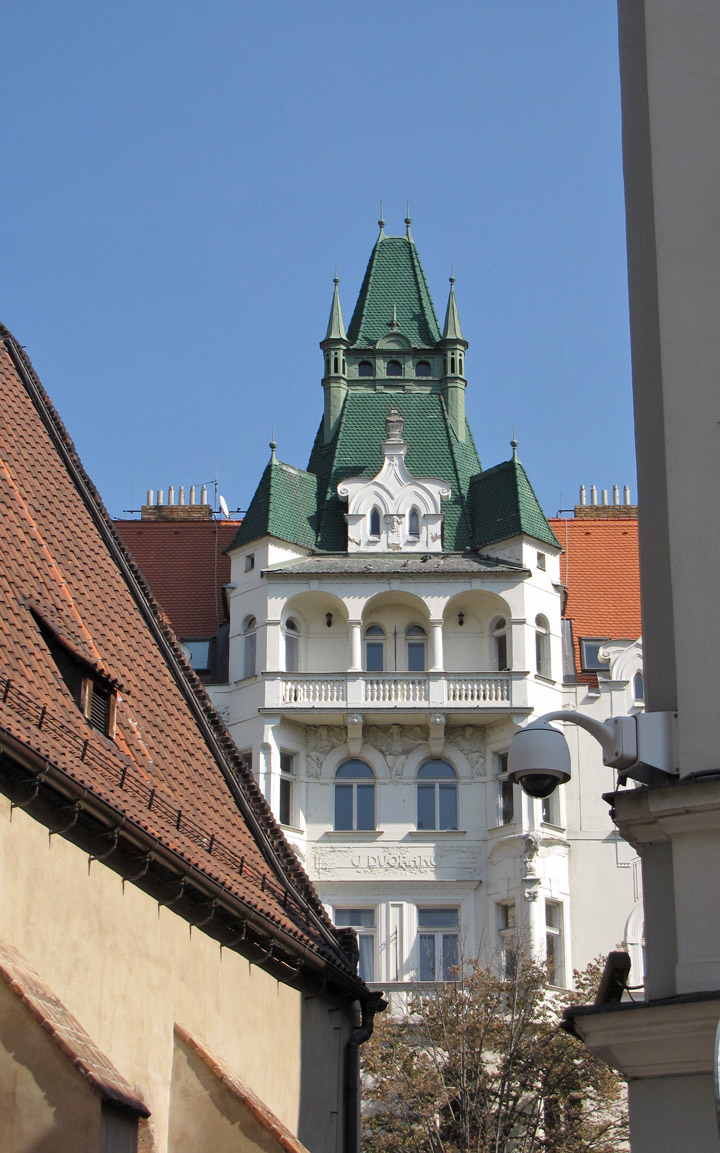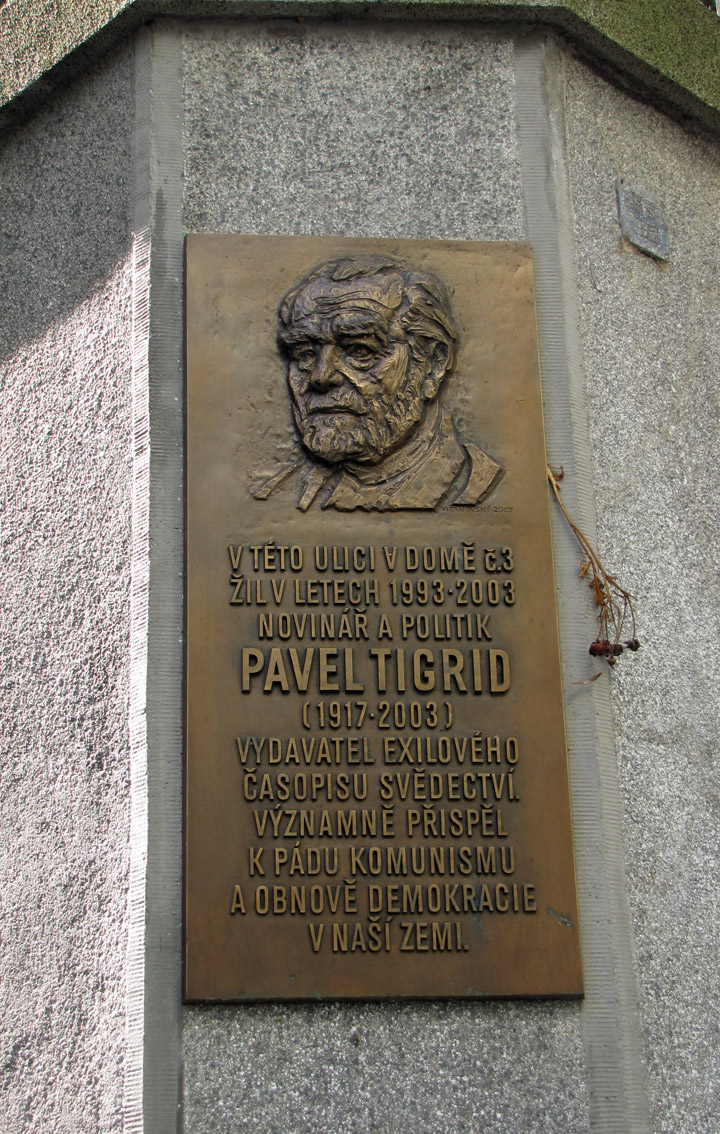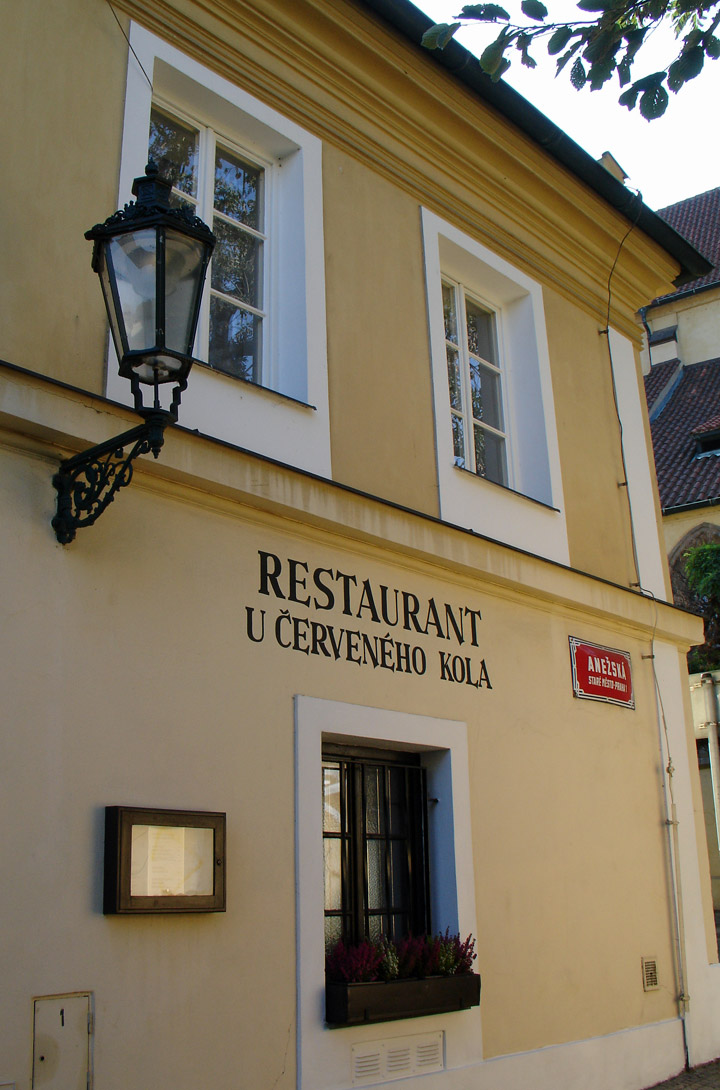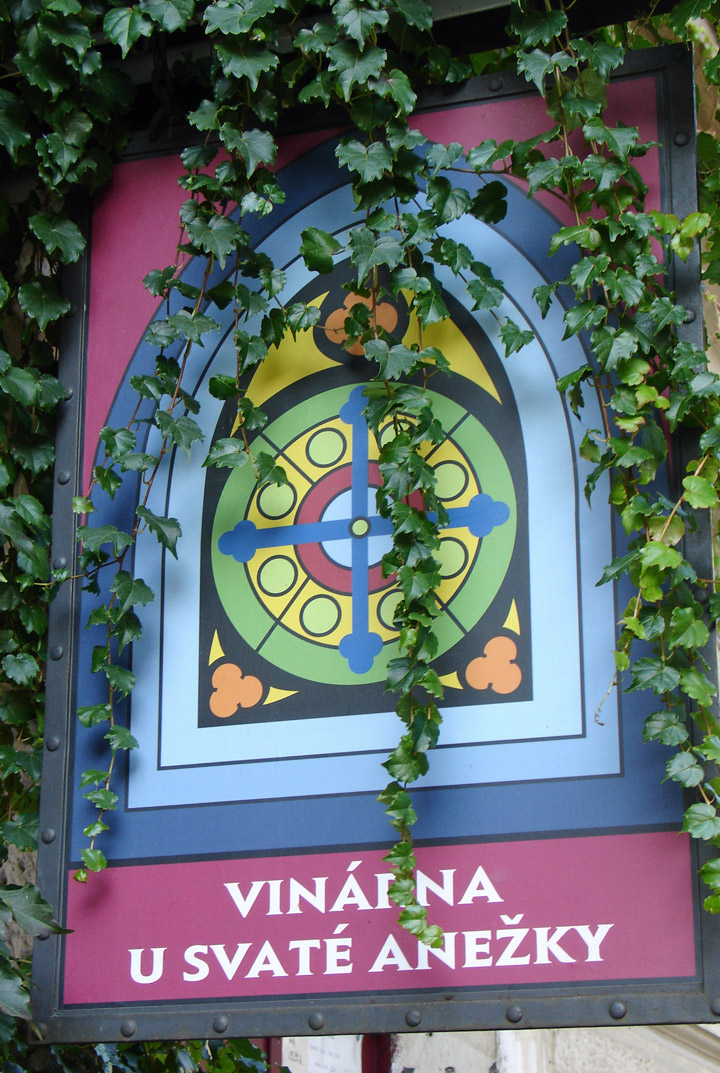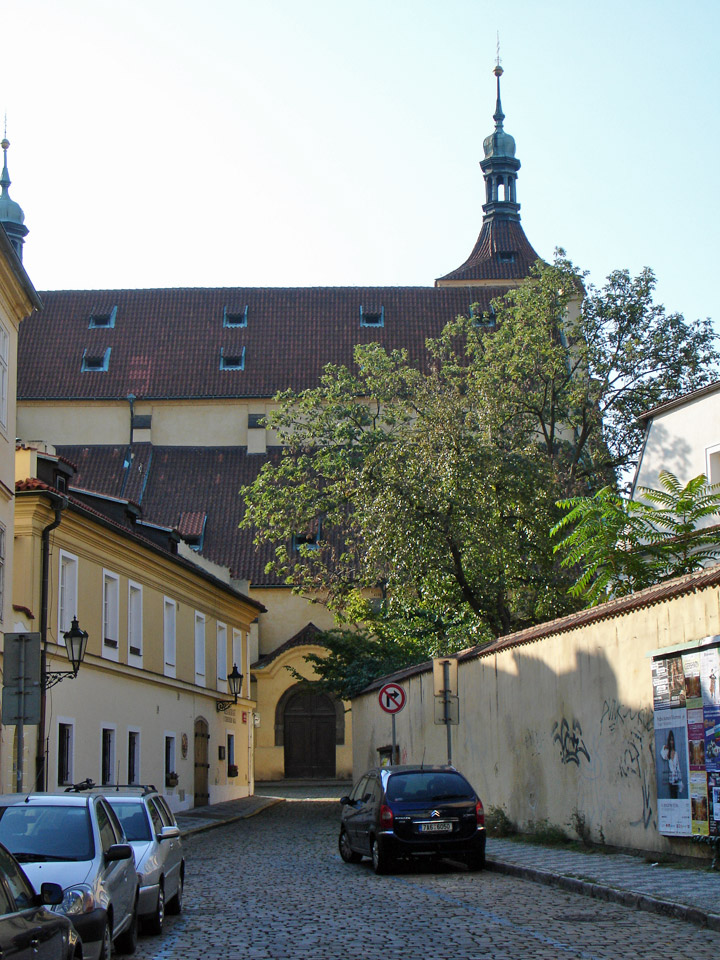

Old New Synagogue
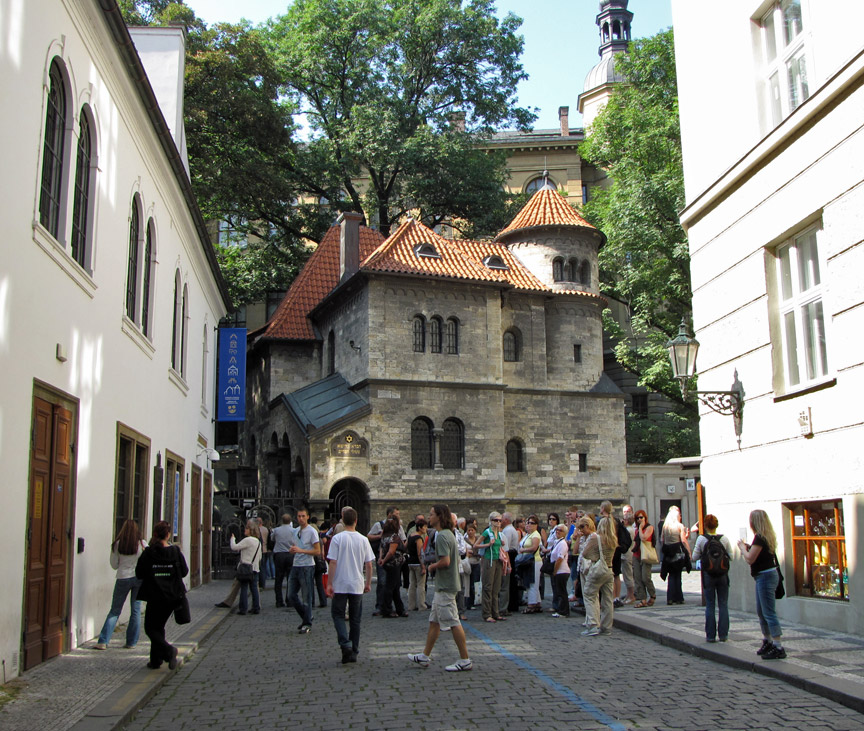
Old New Synagogue
The Old New Synagogue situated in Josefov, Prague, is Europe's oldest active synagogue. It is also the oldest surviving medieval synagogue of twin nave design.
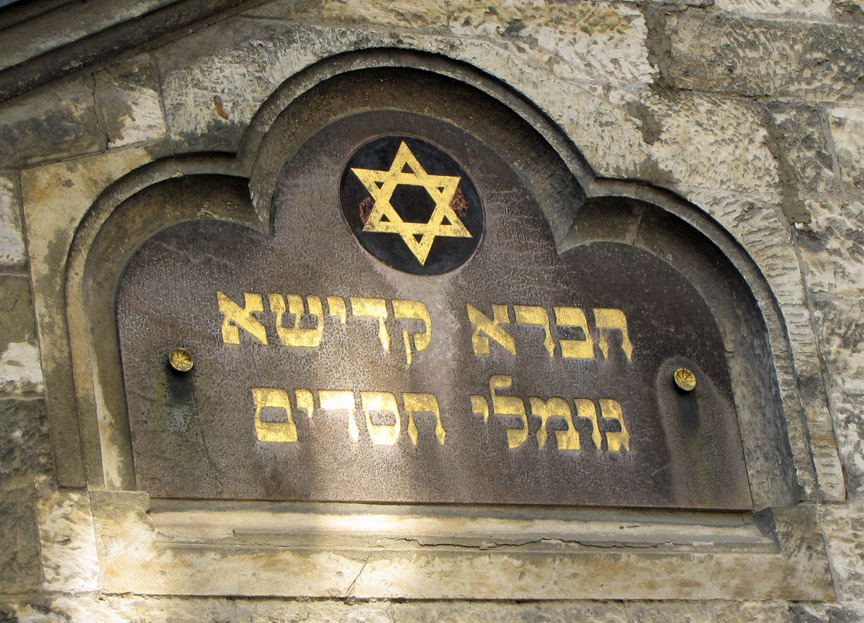
Completed in 1270 in gothic style, it was one of Prague's first gothic
buildings. A still older Prague synagogue, known as the Old Synagogue, was
demolished in 1867 and replaced by the Spanish Synagogue.
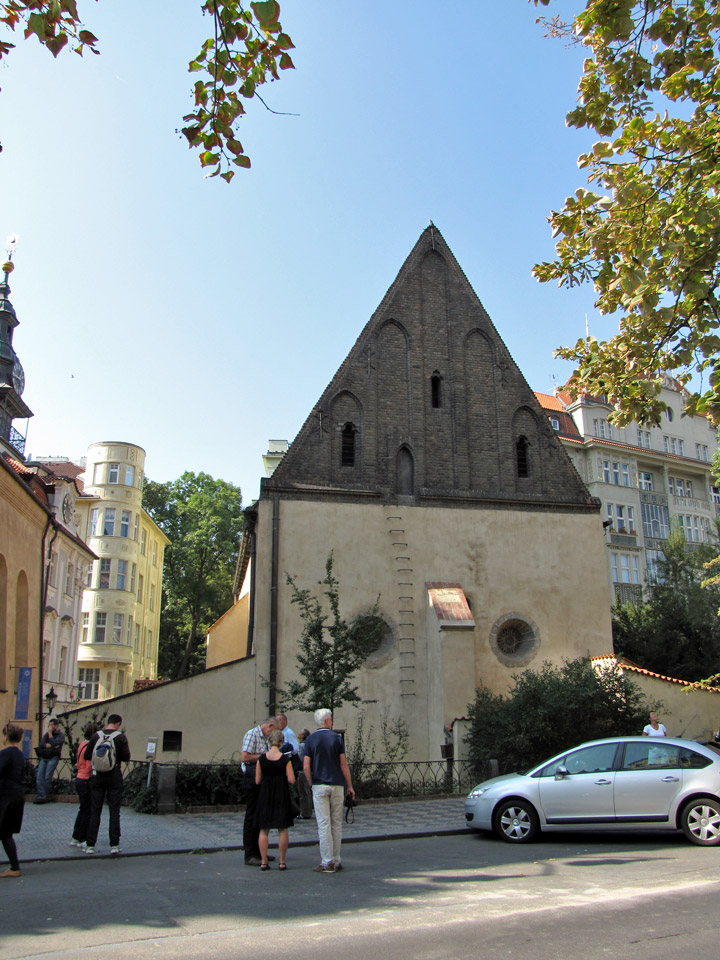
There are two explanations for the name "Alt-Neu." The first is based on the
German and Yiddish translation of Alt-Neu as "Old-New." According to this
explanation, the synagogue was originally called the New or Great Synagogue and
later, when newer synagogues were built in the 16th century, it became known as
the Old-New Synagogue. Another view says this may be a mistranslation. According
to this version, the synagogue is believed to have been built from stones from
the Temple in Jerusalem, and the synagogue was built "on condition", in Hebrew:
Al-Tnai, that the stones would be returned after the reconstruction of the
Temple.
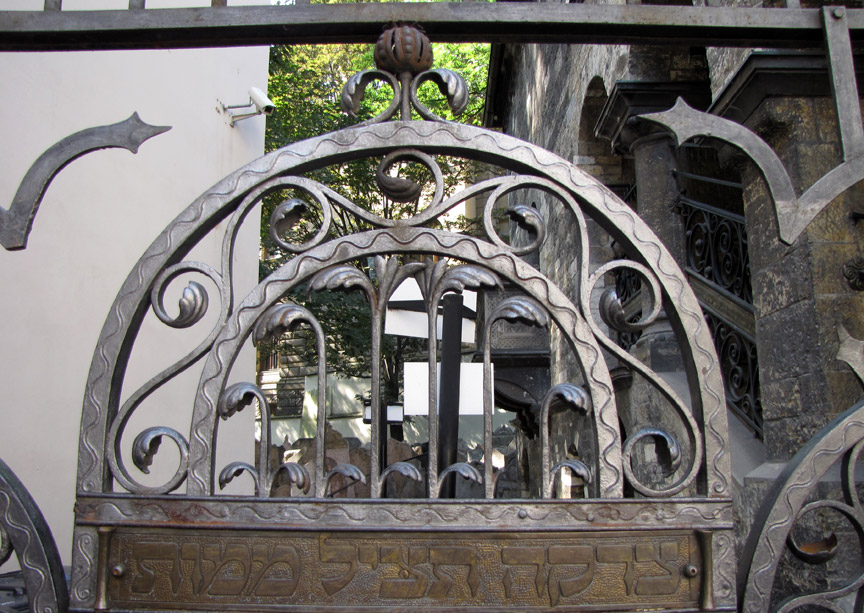
Nine steps lead from the street into a vestibule, from which a door opens into a
rectangular nave with six vaulted bays. Two large pillars aligned east to west
in the middle of the room each support the interior corner of four bays. The
bays have two narrow Gothic windows on the sides, for a total of twelve,
representing the twelve tribes of Israel. The narrow windows are probably
responsible for many descriptions of the Altneu Shul as being dark and dingy,
but it is now brightly lit, with several electric chandeliers.
Synagogue interior. Notice the filleted ceiling with five nervures instead of
four, which could have been a reminder of the Christian cross.
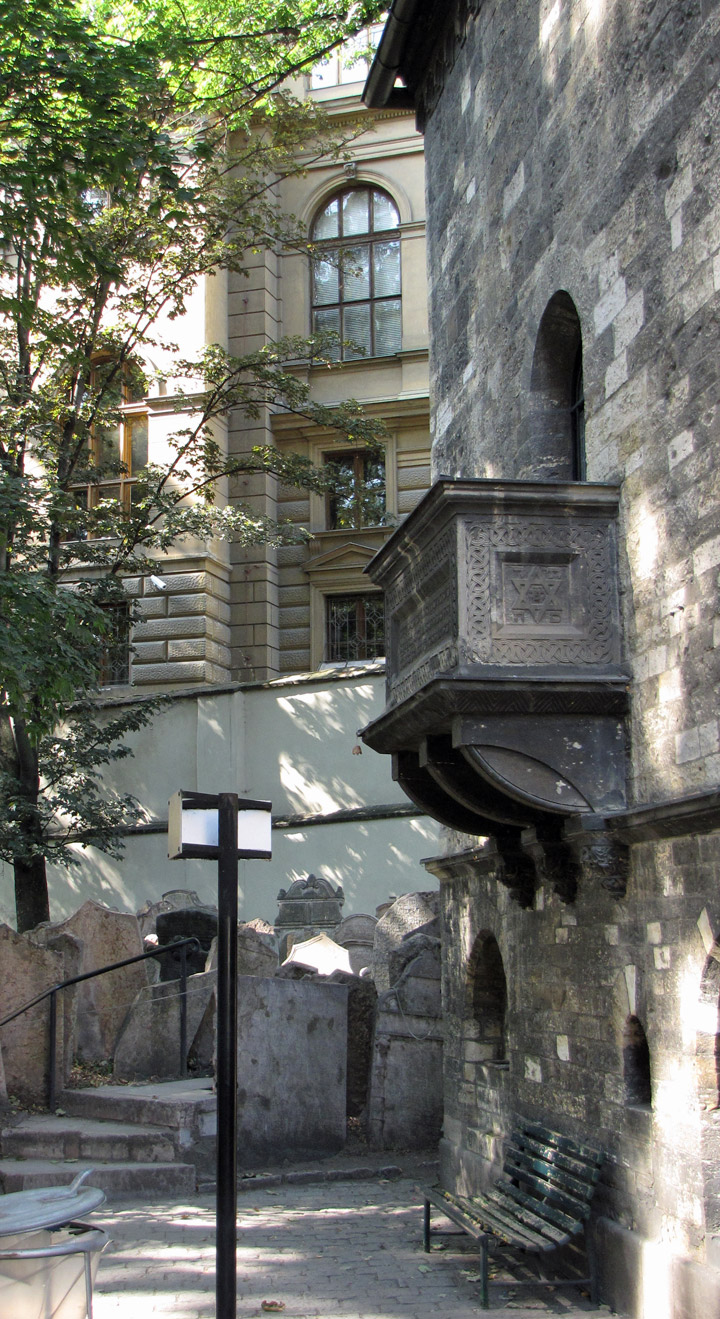
The bimah from which Torah scrolls are read is located between the two pillars.
The Aron Kodesh where the Torah scrolls are stored is located in the middle of
the customary eastern wall. There are five steps leading up to the Ark and two
round stained glass windows on either side above it. A lectern in front of the
ark has a square well a few inches below the main floor for the service leader
to stand in.
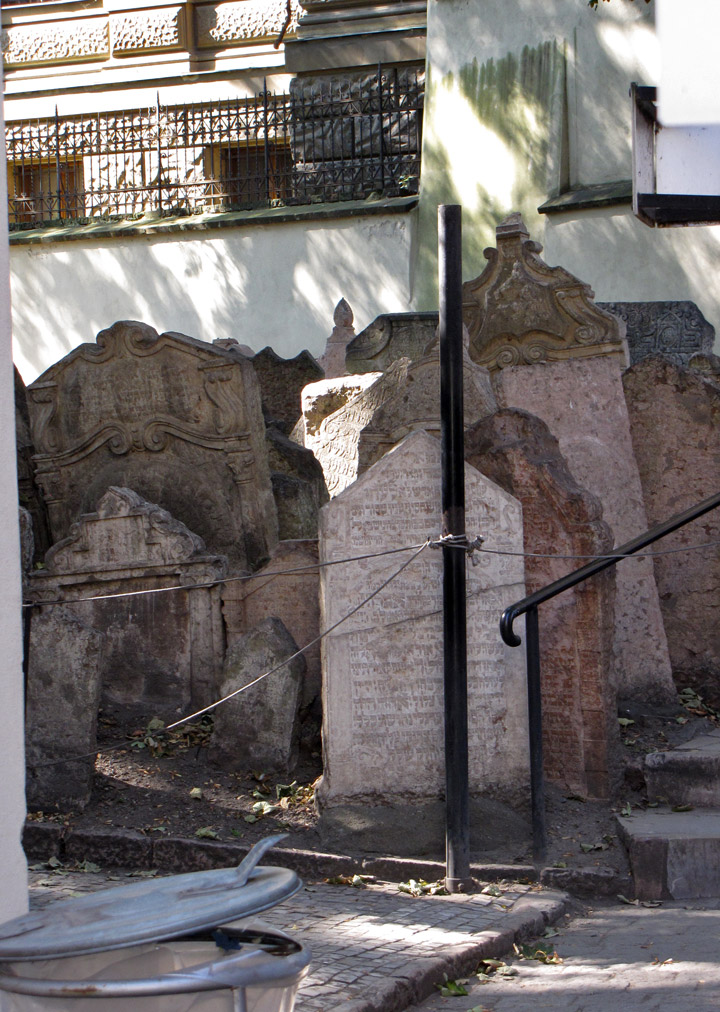
Jewish grave yard
The synagogue follows orthodox custom, with separate seating for men and women during prayer services. Women sit in an outer room with small windows looking into the main sanctuary. The framework of the roof, the gable, and the party wall date from the Middle Ages.

An unusual feature is a large flag on a standard at the west pillar bearing a
Star of David, the text of Shema Yisrael, and a Yarmulke-Jewish hat-are the last
a symbols of the Jewish community in Prague since the 15th century. The right to
carry a flag, a symbol of community autonomy, was granted by Ferdinand II, Holy
Roman Emperor in recognition of the services of the Jews in the defense of
Prague against the Swedes. The current flag was presented to the Jews by Charles
VI (the flag now on display is a replica).
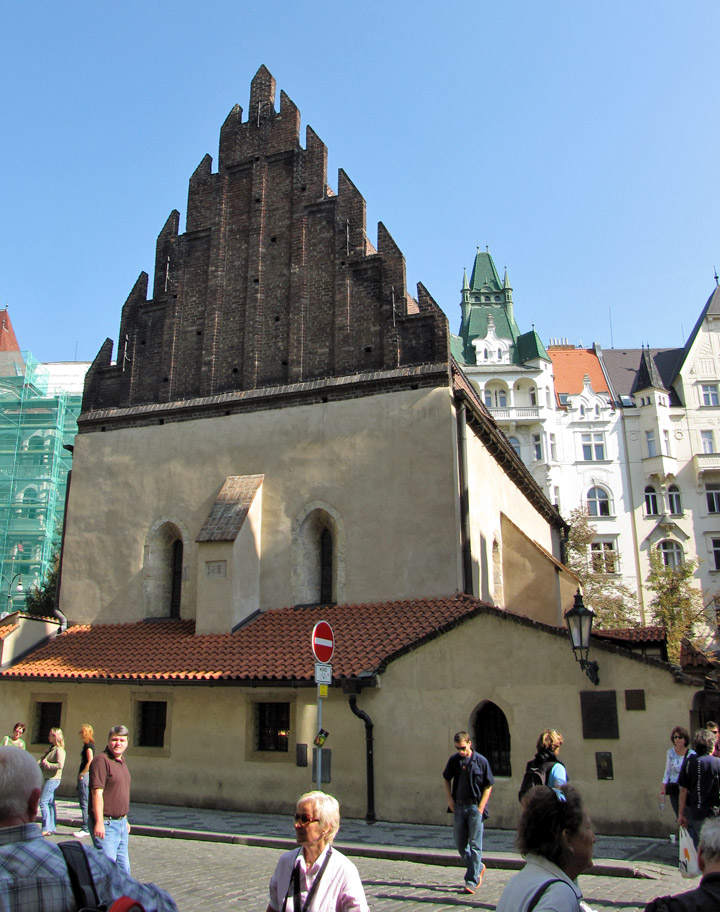
It is said that the body of Golem (created by Rabbi Judah Loew ben Bezalel) lies
in the attic where the genizah of Prague's community is kept. A legend is told
of a Nazi agent during World War II broaching the genizah, but who perished
instead. In the event, the Gestapo apparently did not enter the attic during the
war, and the building was spared during the Nazis' destruction of synagogues.
The lowest three meters from the stairs leading to the attic from the outside
have been removed and the attic is not open to the general public.
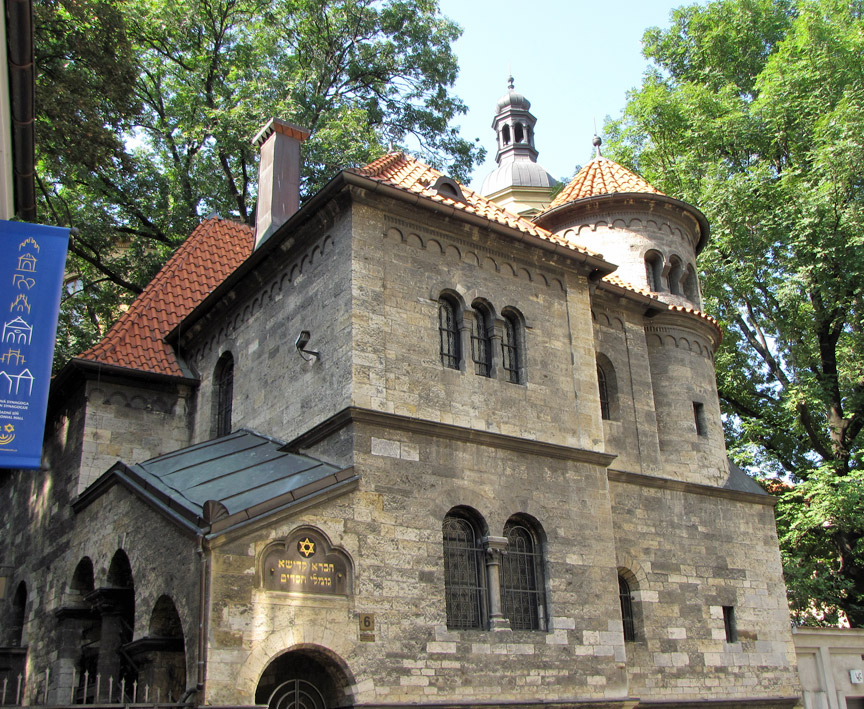


Spanish Synagogue
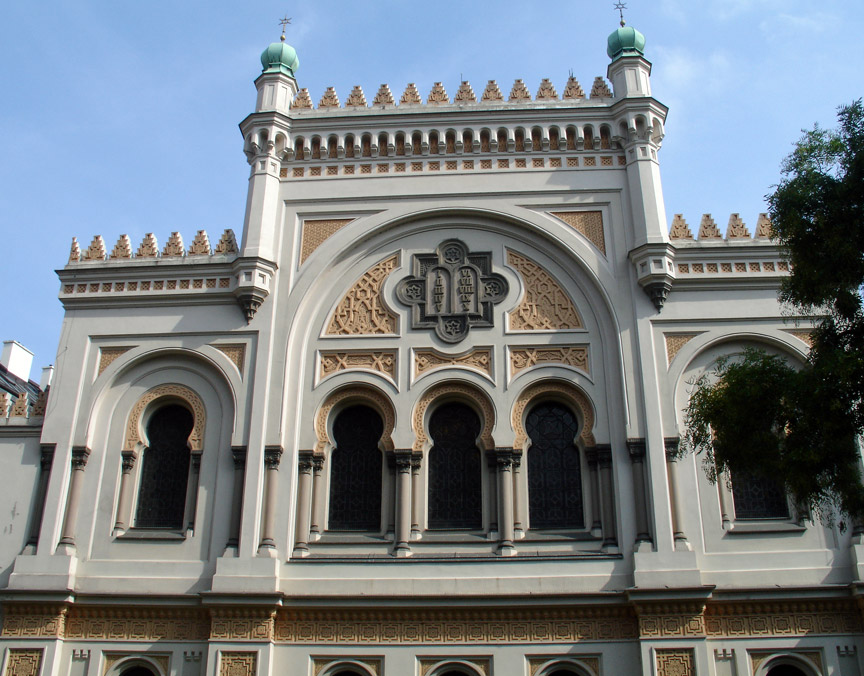
Spanish Synagogue
The Spanish Synagogue is a Moorish Revival synagogue built in Prague in 1868 to the design of Vojtěch Ignátz Ullmann. The facade copies the form of the Leopoldstädter Tempel, built in Vienna, Austria, in 1853, a tripartite facade with a tall central section flanked by lower wings on each side. As in Vienna, the central section is topped by a pair of domed turrets.
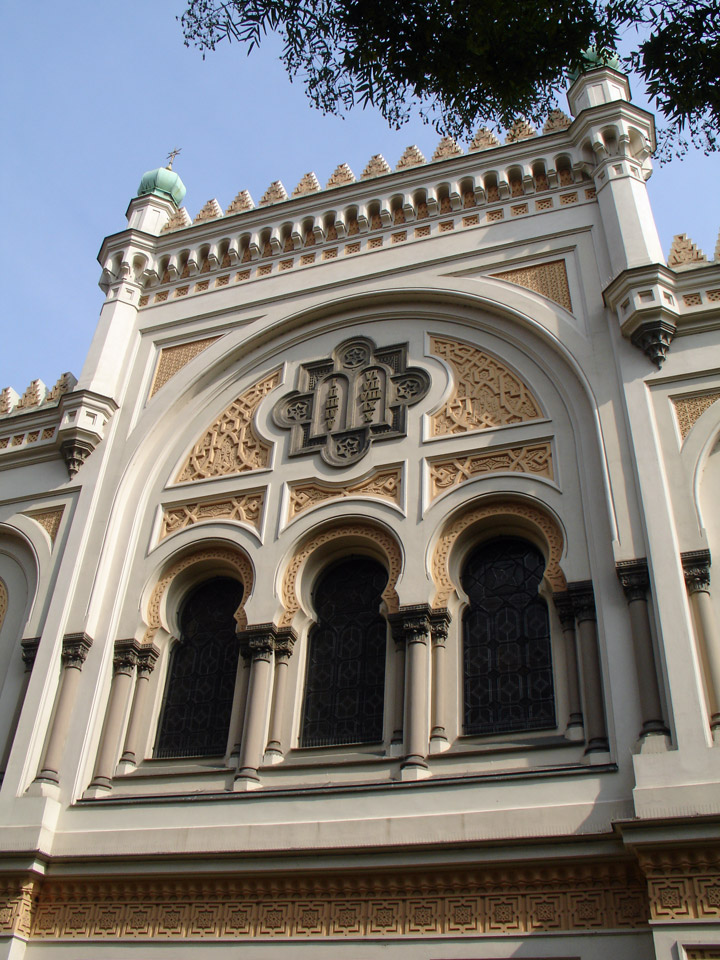
The synagogue is most remarkable for the elaborate style of the interior, every
surface is covered by elaborate Islamic-style polychrome and gilded patterns,
some painted and some carved or molded.

During the Second World War, the Germans used the building as a repository for
property taken from the Jews. The building underwent a restoration in the late
1990s.

concert advertizement
The building is owned by the Jewish Museum of Prague, and is used as a museum and concert hall.

Despite its name, the synagogue was never used by a Spanish or Sephardic
congregation: it was in fact an early Reform temple. There are two theories to
account for the synagogue's name.
1. The Moorish architectural style may have been found reminiscent of the Golden
age of Jewish culture in Spain.
2. The synagogue was on the site of the city's most ancient synagogue, which may
originally have been used by Byzantine Jews. Some awareness of this fact may
have given rise to the legend of a historic Sephardic community.
Text from Wikipedia
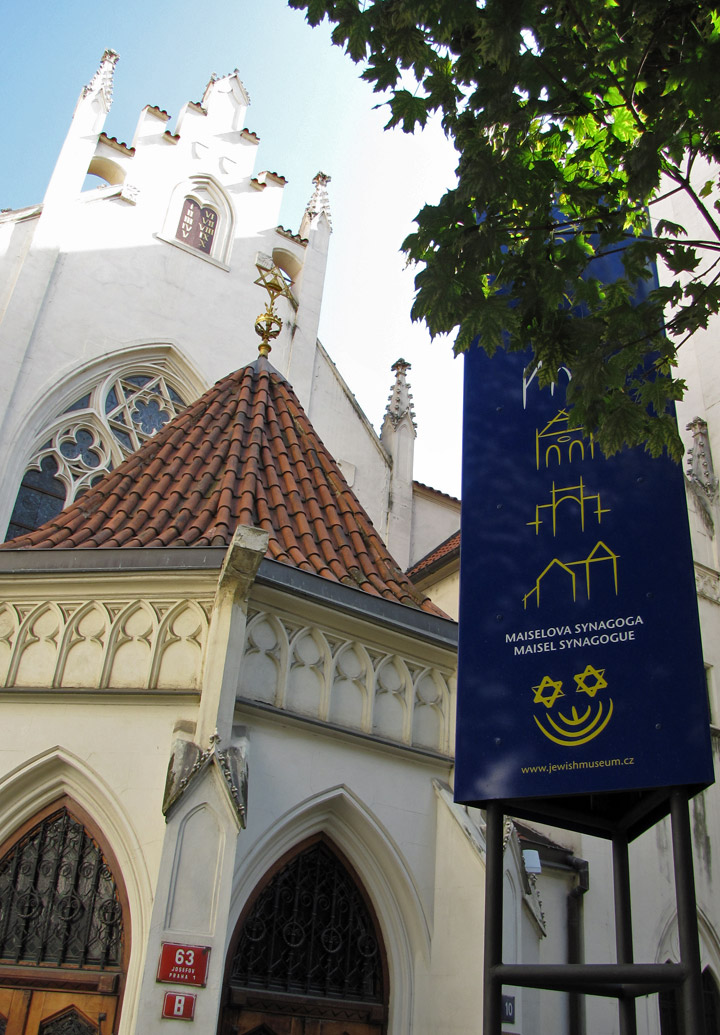
Maisel Synagogue
Jewish Town
